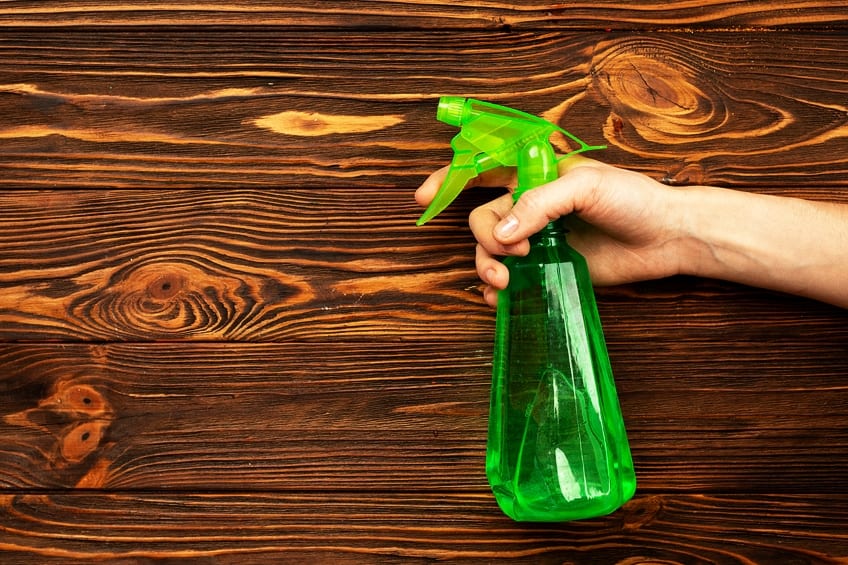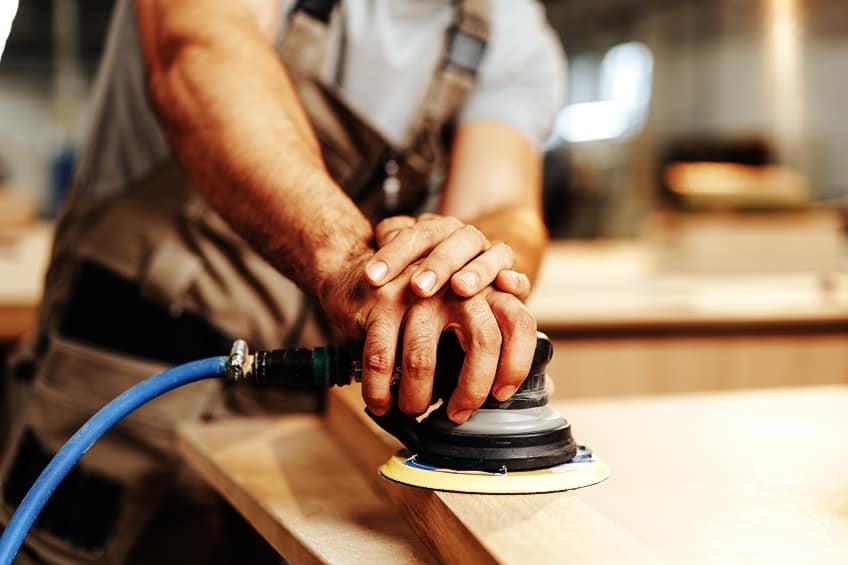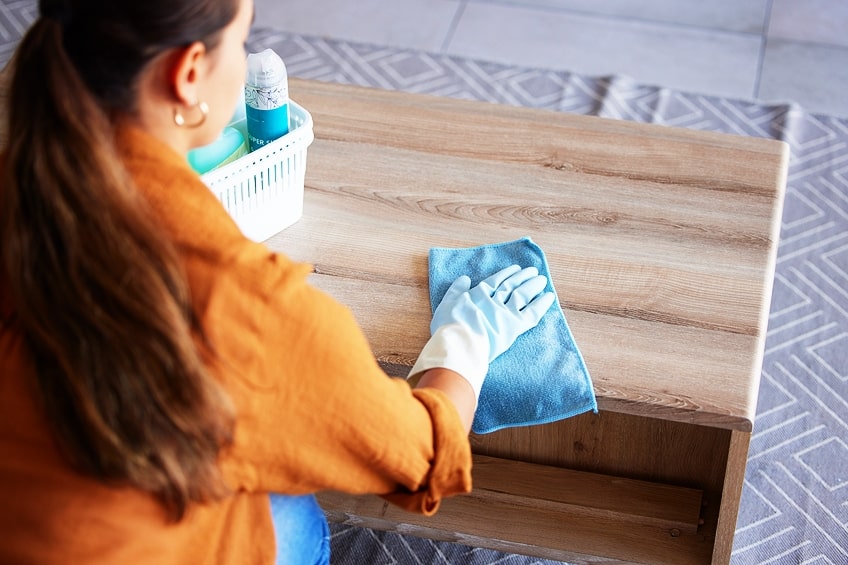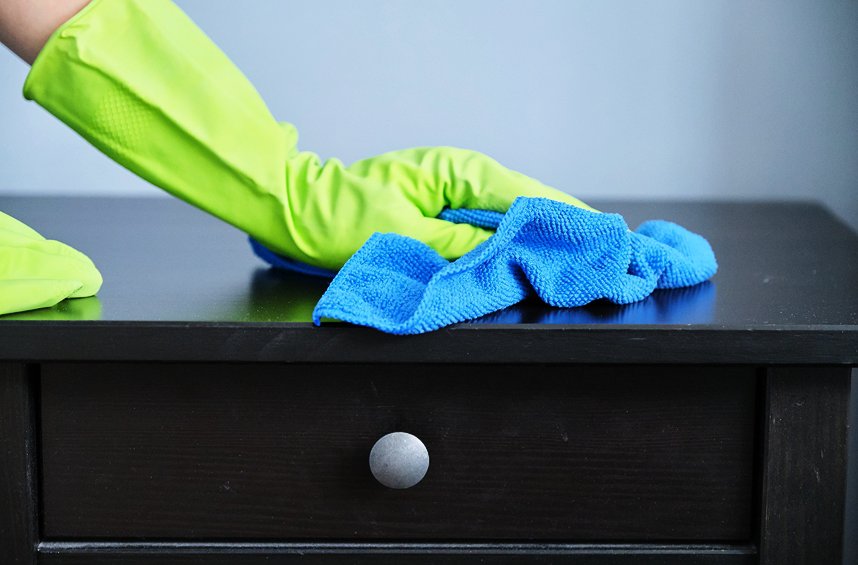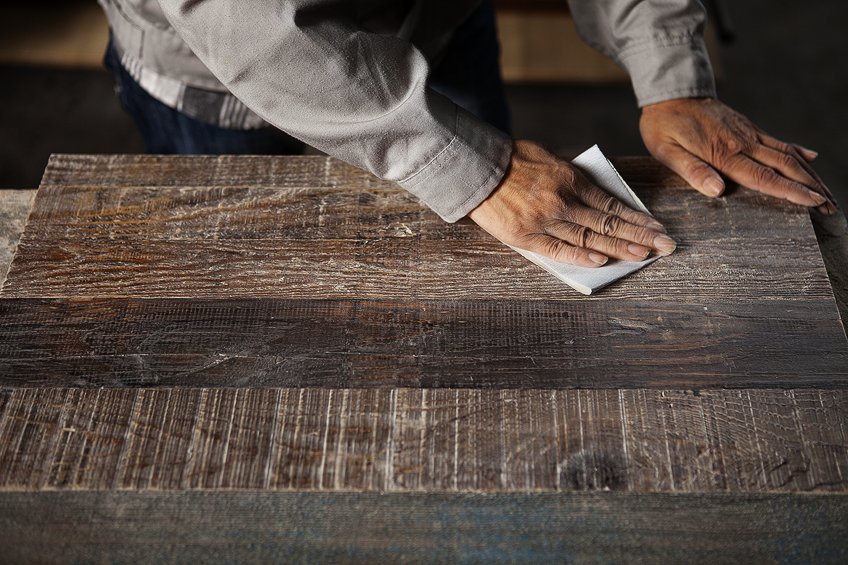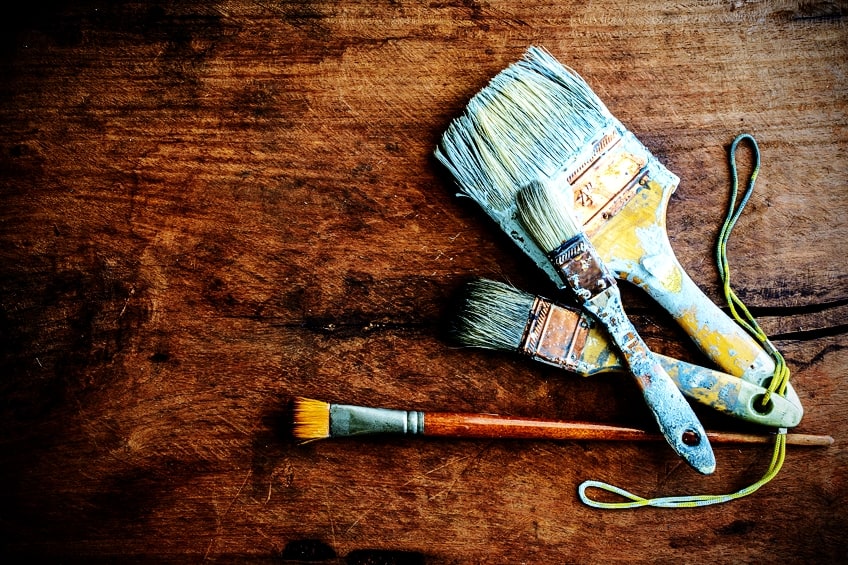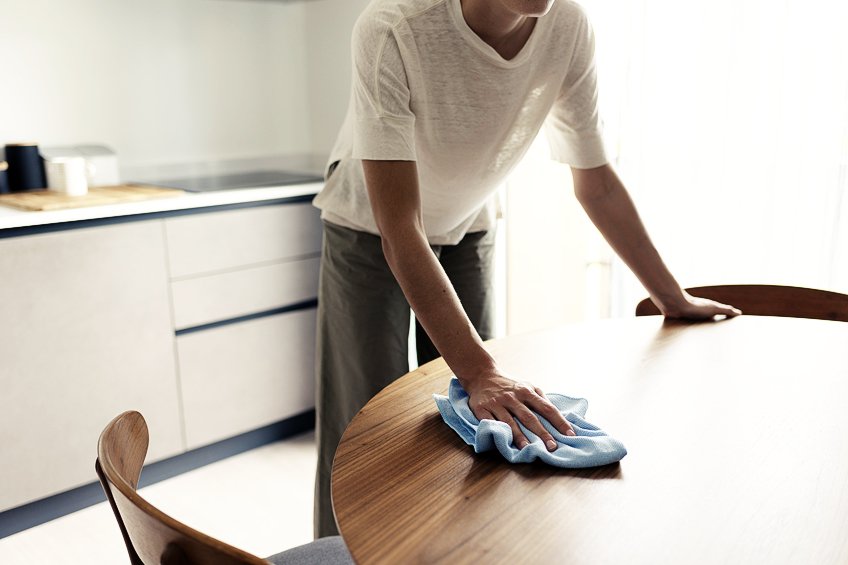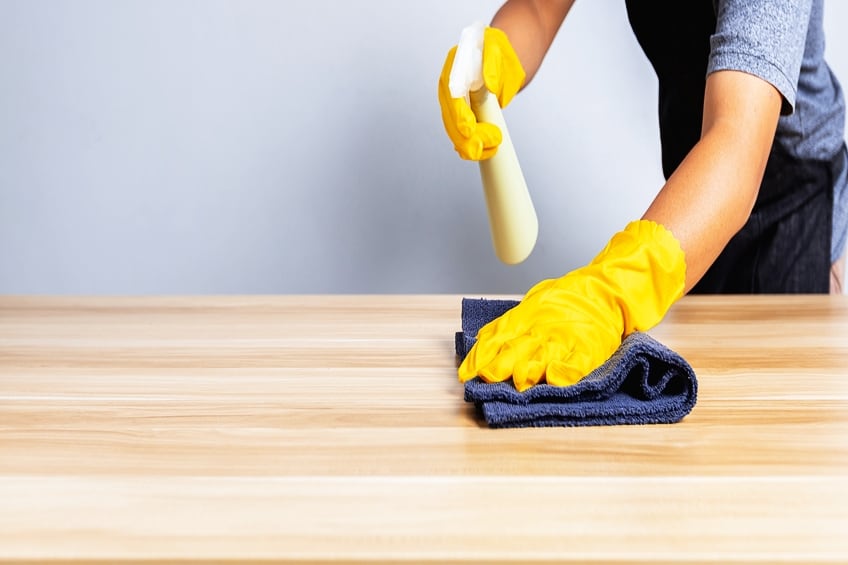How to Clean Wood After Sanding – Cleaning Wood Made Easy
This post may contain affiliate links. We may earn a small commission from purchases made through them, at no additional cost to you. You help to support resin-expert.com
Sanding wood is a vital part of any woodworking project as it allows you to get a smooth finish before applying your finish. However, it is important to know how to clean wood after sanding, as a lot of the leftover dust can be invisible to the naked eye. This means that you could run into some issues when it comes to applying your finish, which could lead to less-than-optimal results. Below, we have covered everything you would need to know about how to clean sawdust off wood.
Table of Contents
Why You Should Clean Wood After Sanding
As we have already established, sanding is a vital part of preparing wood for any type of finish. But more often than not, many of us overlook the importance of cleaning up after sanding the surface. Neglecting the clean-up process can have a detrimental effect on the quality of your finish which could lead you to start over or be stuck with an eyesore of a project.
The Sanding Process
Understanding how to sand wood will make the project much easier to complete as you will have a smooth surface that will help with the adhesive properties of different finishes.
Regardless of the type of sanding method you use, there will be certain things that you will need to look out for.
Orbital Sanding
Using an orbital sander is both the quickest and the messiest way of sanding a wood surface as it produces a lot of sawdust. However, the most important thing to be wary of is the swirl marks that are generally left behind. Additionally, this is very difficult to spot, but once the stain is added, you will have a problem on your hands.
Traditional Sanding
With standard sandpaper, you will have a lot of work ahead of you as you will need to switch between different types of grits. Since this is a manual job, you will need to manage the amount of pressure that is applied to the surface. Once you have reached a suitable grit smoothness, lightly sand with the grain for the ideal finish.
Chemical Sanding
The use of liquid sandpaper is not unheard of and this is a great way to get the job done when you are looking for a less labor-intensive way of sanding. However, because this is a chemical compound, you will need to take the necessary measures to ensure that you do not inhale the fumes or get it on your skin.
Liquid sandpaper is essentially a diluted paint stripper, and it can get very messy.
Things to Remember When Sanding
Before we can jump into the best way to clean wood after sanding, there are a few things that we will need to keep in mind. You could be tempted to jump into it and start sanding aggressively, this is one of the worst ways to do it as you could make mistakes that could end up damaging the wood. By going with the grain in a fluid motion, you will end up with a smooth finish that will be ready for your wood finish. You could be wondering how smooth the surface should be.
This depends on the type of wood that you are working with. For instance, open-grain wood has a rough texture and coarse grain lines which means that you should not bother with high-grit sanding. However, closed-grain wood has a smoother texture that will need high-grit sanding to get rid of sanding scratches.
The Best Method for Cleaning
The process of cleaning wood might sound simple; however, there are a few things that you will need to look out for. To get the best results, there are a few important things that you will need. These will ensure that you will get the best possible results once you apply your finish. Take a look at the products below.
- Denatured alcohol
- Tack cloth
- Clean cloths
- Vacuum or a high-pressure air compressor
- Safety goggles
- Coveralls
- Mask
Step 1: Remove the Dust
Begin by blowing away the majority of the sanded debris with an air compressor equipped with a blower head. Better still, vacuum every possible surface and nook of your wood project using a shop vacuum equipped with a high-quality filter intended to catch minuscule particles. Though any vacuuming is preferable to none, a conventional filter could lead the vacuum to blow dust back toward the area, where it can accumulate on the surface that you are trying to keep clean.
Step 2: Use a Dry Cloth to Wipe the Surface
The next step is to wipe off the surface with a clean, dry cloth. When you clean your woodworking surface use a white cloth, as it will help you to see how much dust has accumulated. This should be done after each sanding phase to ensure that there is not too much debris that has built up over time.
Step 3: Get Familiar With a Tack Cloth
As the name suggests, this is a special cheesecloth that is fused with beeswax which makes it perfect for collecting dust. Start by cutting your tack cloth into little squares and clean all of the wood surfaces lightly.
Check the tack cloth on a regular basis to see the amount of dust that is gathering, and replace it when it becomes dirty.
A tack cloth may also be used to ensure that your wood has been thoroughly sanded. If you see that the fine strands of the fabric are catching on rough areas, it is a clue that you did not sand well enough. If you want a smooth finish, ensure that the tack cloth slides easily over the surface of the wood as you clean; if not, go back to the sanding phase.
Step 4: Use Denatured Alcohol to Wipe Down the Surface
Most woodworkers finish their wood preparation process with a tack cloth wipe-down, although for the most effective results, finish by wiping off all surfaces using a clean cloth dampened with a solution of denatured alcohol.
The denatured alcohol is going to pick up even the tiniest particles, and because it dissipates rapidly, it will not stain the wood. It can even be suitable to use on food-related items, such as a chopping board or a wooden bread pan.
If you cannot get denatured alcohol, you can also clean wood with mineral spirits.
Step 5: Inspecting Your Work
When the cleaning process is finished, check the wood for any flaws. If you are not yet ready to paint or stain the wood, cover it up once it has been examined. This will save all of your hard work from going to waste. This is the most effective way of learning how to clean wood after sanding while learning from your mistakes.
The Most Effective Products
There are different ways of learning how to clean wood after sanding with a variety of products. However, these products can also be used with the method that we have mentioned before, with a slight emphasis on the product itself. These are some other routes you can take if you are unable to use any of the ways indicated above for any reason.
Nevertheless, you should be aware that the ways of cleaning wood outlined in this part are not devoid of downsides.
Tack Cloth
Tack cloth, besides aiding in the cleaning of wood after sanding, makes it simple to determine whether or not sanding was completed properly. All you have to do is examine the material carefully to check if any threads are catching on an abrasive surface. You may purchase a tack cloth at your nearest hardware shop, online, or even manufacture one yourself. Simply dip cheesecloth inside tung oil before storing and placing it in a plastic bag; this ensures that it won’t dry out after multiple uses.
How to Use It
Fold the cloth in a comfortable shape and proceed to wipe it slowly to get all of the dust. If needed, flip the cloth once it gets clogged with dust to ensure that you do not spread the sawdust across the surface.
Paintbrush
The first step in cleaning wood after sanding is to remove the dust from the surface of freshly sanded wood. Here you can use a painter’s brush or a dedicated dust brush. Larger brushes are ideal for cleaning surfaces, whereas smaller brushes are good for cleaning inaccessible places. When using a firm brush, though, scratch marks are more likely to appear.
How to Use It
Using a paintbrush is incredibly simple. With short light strokes move the dust onto a dustpan or you can vacuum it up. If you are finding this ineffective, it is best to repeat the process until you can no longer feel or see any dust.
Trisodium Phosphate Powder (TSP)
A different technique for cleaning wood after sanding is to use Trisodium Phosphate powder cleanser. TSP, a common home wood cleaning and de-greasing chemical, is well-known for its capacity to clean wood, particularly before painting. TSP can be found in both powder and liquid forms, so you may use whichever one works most effectively for you.
How to Use It
With a brush or a vacuum, remove the excess dust, and it does not have to be a perfect job. Then proceed to add some TSP to a cloth and wipe down the wooden surface to get rid of the leftover dust. Repeat the process if needed, but this should take care of all the dust.
Mineral Spirits
This effective wood cleaning agent is ideal for eliminating oil and greasy film from the wood’s surface. Furthermore, mineral spirits help in facilitating the absorption of paint and wood stain. To clean wood with mineral spirits pour just a few drops of the mineral spirit onto a section of lint-free cloth to clean the wood following sanding.
Then, using the cloth, slowly clean the wood’s surface. Wipe with the grain to avoid scratches from becoming visible when the staining process begins. Also, avoid wiping the wood’s surface in circular motions and swap to a clean rag whenever the present cloth becomes soiled.
How to Use It
Try and remove as much of the dust as possible and then add some of the mineral spirits to a rag and onto the wood. Gently wipe the surface with the rag and repeat the process across all parts of the dusty wooden surface. Use the clean side of the cloth and continue wiping down the surface. With a clean dry cloth, wipe down the surface until no dust is left.
The Pros and Cons of Each Cleaning Product
We would put together a table of the various cleaning solutions, detail their pros and downsides, and indicate if they are acceptable for cleaning your wood project after sanding or whether using them to clean wood after sanding is just a terrible idea.
| Product | Pros | Cons |
| Wax |
|
|
| Turpentine |
|
|
| Mineral spirits |
|
|
| TSP |
|
|
When Should You Clean Wood?
Cleaning wood is an important part of the process as this will determine the quality of your finish. However, it is always a good idea to develop the habit of cleaning after sanding the wood. By ensuring that the surface is wiped down or vacuumed after each pass of sanding, you will have a quick and easy cleanup process.
Knowing how to clean sawdust off wood is crucial and we have gone through multiple processes of cleaning wood. The method that you choose comes down to your preference and level of comfort working with certain products. Overall, cleaning wood after sanding is a simple process that requires some patience, but we believe that you can get the job done. Good luck!
Frequently Asked Questions
What Would Be Considered to Be the Best Way to Clean Wood After Sanding?
The best method of cleaning wood would be to use TSP; however, it can be very dangerous to work with. The next best way is to use a blower and vacuum before wiping the surface down with a tack cloth.
Is It Easy to Learn How to Clean Wood After Sanding?
Yes, the process is very simple, but it is very time-consuming. If you have patience and a lot of time on your hands, it can make for a good afternoon project.
What Is the Least Harmful Way to Ensure That the Wood Is Clean?
The safest method of cleaning wood after sanding is using a tack cloth and a vacuum to suck up the excess dust. With no harmful chemicals involved, all you will need is a large workspace to get the job done.



